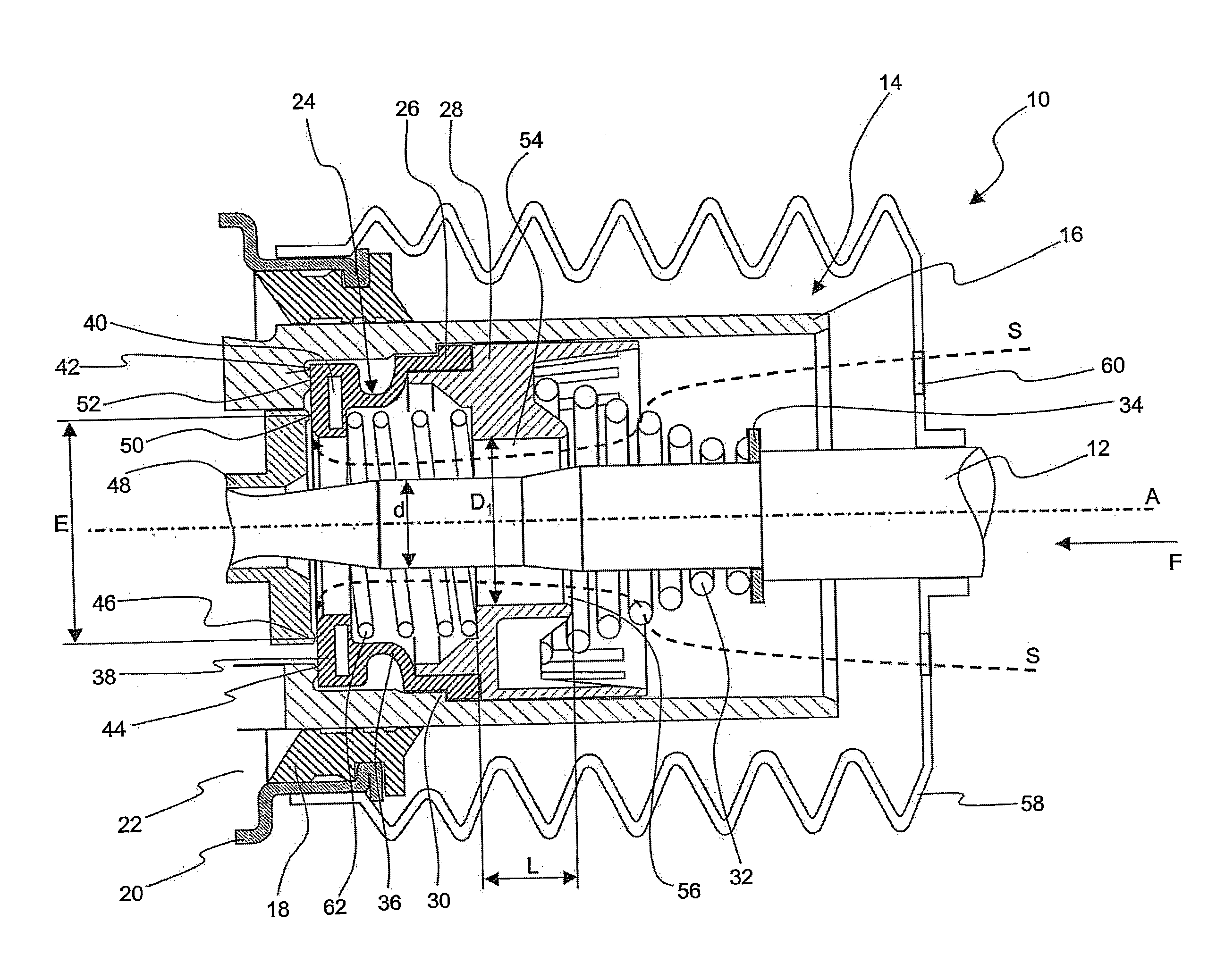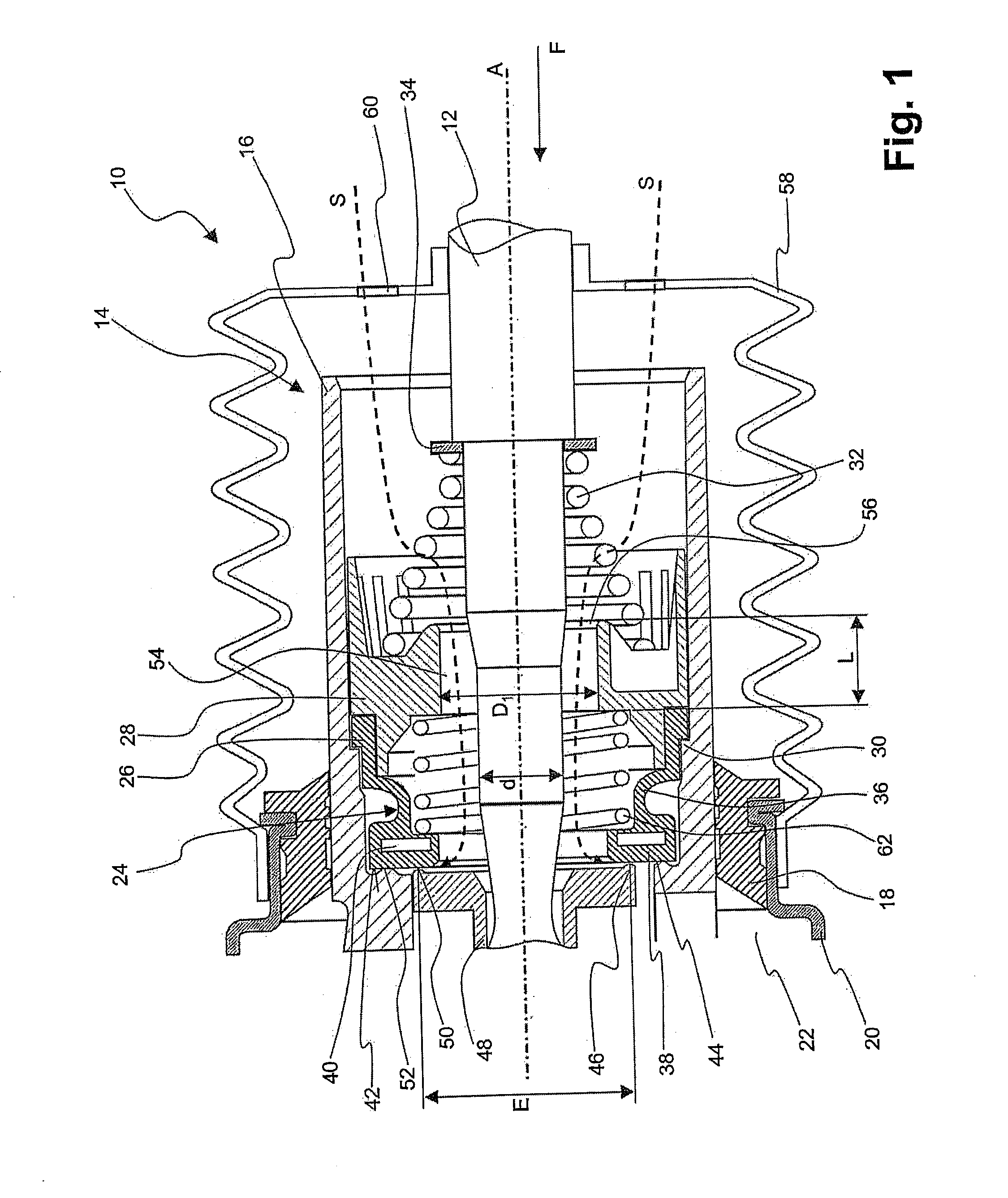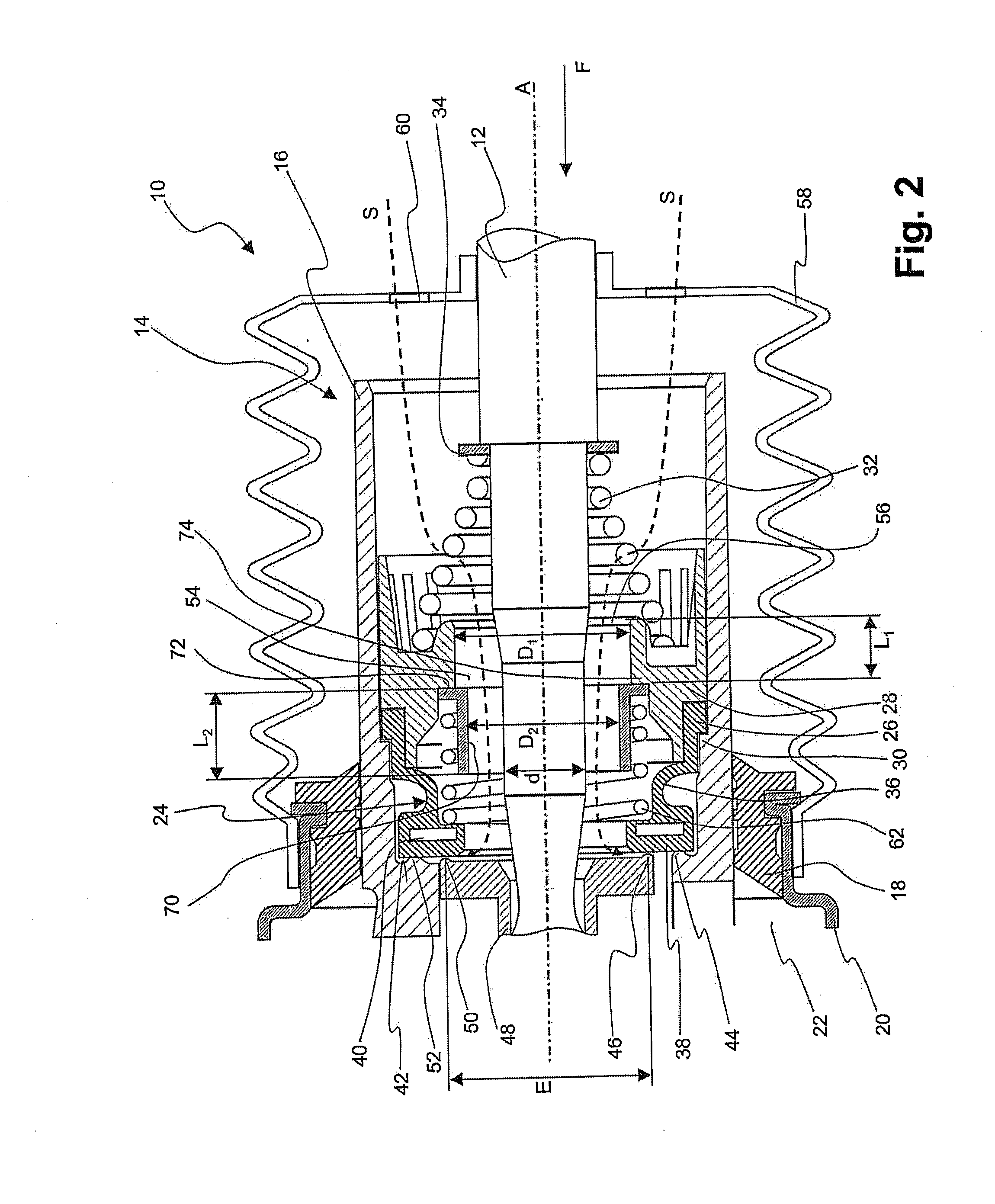Vacuum Brake Servo for a Motor Vehicle Braking System
- Summary
- Abstract
- Description
- Claims
- Application Information
AI Technical Summary
Benefits of technology
Problems solved by technology
Method used
Image
Examples
Embodiment Construction
[0024]FIG. 1 shows a detail of a vacuum brake booster according to the invention in an axis-containing longitudinal sectional view, and designated generally by 10. This vacuum brake booster comprises a force input member 12, which at its right-hand end in FIG. 1 faces a connection mechanism, by which it is coupled or can be coupled with a brake pedal. At its left-hand end in FIG. 1, the force input member 12 faces in the direction of a brake master cylinder arrangement (not shown). A control valve 14 is arranged in the vacuum brake booster 10 around the force input member 12. This control valve comprises a control valve housing 16, which is displaceably guided in a brake booster housing 20 in a sealing manner via a seal 18. Arranged in this brake booster housing 20 is a chamber arrangement, which has, in a manner known per se, a working chamber 22 and a vacuum chamber (not shown), the working chamber and the vacuum chamber being separated from one another via a moveable wall (not sh...
PUM
 Login to View More
Login to View More Abstract
Description
Claims
Application Information
 Login to View More
Login to View More - R&D
- Intellectual Property
- Life Sciences
- Materials
- Tech Scout
- Unparalleled Data Quality
- Higher Quality Content
- 60% Fewer Hallucinations
Browse by: Latest US Patents, China's latest patents, Technical Efficacy Thesaurus, Application Domain, Technology Topic, Popular Technical Reports.
© 2025 PatSnap. All rights reserved.Legal|Privacy policy|Modern Slavery Act Transparency Statement|Sitemap|About US| Contact US: help@patsnap.com



